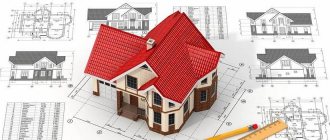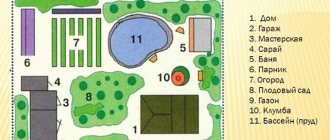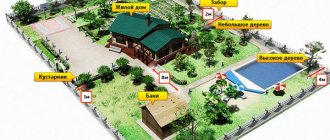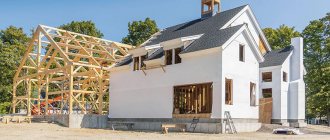Now, as indicated in the document, Russians annually build 250-270 thousand houses with an average area of 130-140 square meters at their own expense. This is 40-45% of all new housing. True, about 7 million sq. m of this amount is registration of previously built houses under the simplified “dacha amnesty” procedure. Approximately 40% of private houses are being built in 10 regions of Russia, with the Moscow region, Krasnodar Territory and Bashkortostan leading.
At the same time, according to a survey, 3 million families would like to acquire a personal cottage in the next 5 years. At the current volume of construction, this demand will be satisfied in no less than 19 years, the Ministry of Construction notes.
The program, designed for 2020-2024, should increase the volume of construction of individual houses from the current 30-36 million square meters. m per year up to 40 million sq. m. As a result, an additional 24 million square meters will be built in the country. m of housing.
Where to build?
According to the head of the All-Russian Center for National Construction Policy, Alexander Moor, in order to develop individual housing construction, it is necessary, first of all, to work out the allocation of land for development to citizens - for example, by extending the program of free transfer of “Far Eastern hectares” to the entire country. “If you have a plot of land, then you will look at what can be done on it. And this is where preferential mortgage mechanisms and many other things can work,” he believes.
There is no talk about this in the Ministry of Construction program yet. But it is proposed to increase the area of plots provided for individual housing construction. Authorities should allocate zones for the “private sector” mainly in areas with developed infrastructure and near “places of employment”, within the boundaries of built-up areas of municipalities. Expansion of plots at the expense of forest fund lands is allowed - if this is justified by socio-demographic, economic and other development forecasts.
It is noted that it is advisable to stimulate individual housing construction where there is demand for it. First of all, in cities with a population of more than 50 thousand people or at a distance of up to 30 km from their borders. For Moscow and St. Petersburg - at a distance of up to 50 km.
Documents for the construction of a residential building
It is important to understand that individual housing construction or individual housing construction on your own land plot is not only a natural desire of every land owner, but also obliges, in turn, to fulfill a number of certain conditions and requirements that contribute to the realization of the desire to have your own home.
Such requirements are the preparation of documents for the construction of a private residential building, that is, it is necessary to register a land plot (Federal Law “On State Registration of Rights to Real Estate and Transactions with It”, Articles 16, 18) and obtaining permission to build an individual residential building.
It is also important to know all the intricacies of this process, since official permission is necessary both for putting the house into operation and for connecting to communications.
Documents for the construction of a residential building: application for a permit to build a residential building
What is a permit to build a residential building?
What is a permit to build an individual residential building? What is a plot of land for the construction of a residential building, and what are the types of sites for the construction of a residential building?
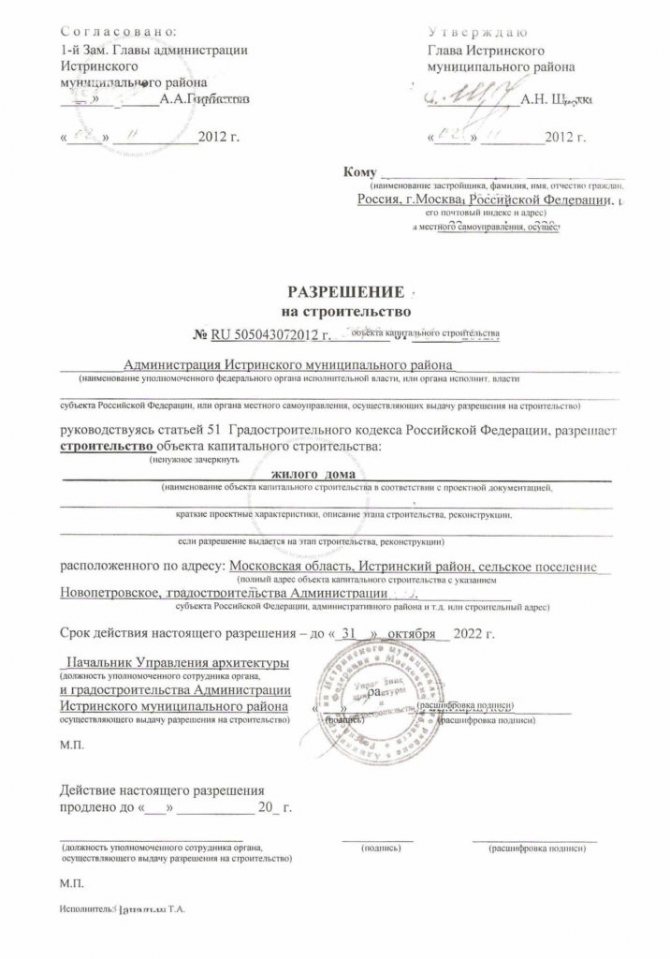
Permission to build a residential building
In short, it is advisable to consider the main theses that:
- A permit for the construction of individual residential houses is an official document confirming that the project submitted to the competent authority for the construction of a house complies with the site planning and land surveying projects, which in turn gives the owner the right to individual housing construction or to reconstruct existing real estate properties ;
- They obtain permission to build an individual residential building from the local government of the district, that is, on the territory of the district where the plot of land is located. If it is intended to carry out work related to the use of subsoil, then you should contact the Ministry of Natural Resources and Ecology of the Russian Federation or its territorial divisions. If nuclear energy is used on a piece of land, then you will also have to visit the Federal Service for Environmental, Technological and Nuclear Supervision;
- A permit for the construction of a residential building is issued when applying to the Multifunctional Center for the Provision of State and Municipal Services (MFC). In addition, a complete list of organizations that need to be contacted in certain situations can be found in the Town Planning Code.

Note! The simplified procedure for obtaining permission for individual housing construction is valid until March 1, 2020, therefore, before the specified period, permission to put an individual housing construction project (or individual housing construction) into operation is not requested, and the title document for the land plot is the only basis for state registration of ownership rights to such an object individual housing construction.
Land plot for construction of a residential building
Based on the Town Planning Code, land use and territory development rules, all lands in the Russian Federation are divided into two main categories, each of which has its own types of permitted use (APU), below are two types of AUT:
The first type of permitted use (AU): lands of populated areas, that is, in Russia construction is carried out only on the lands of populated areas with permitted types of use (AU), which are intended:
- for individual housing construction;
- low-rise residential development;
- personal plot of land (LPH);
- blocked residential development;
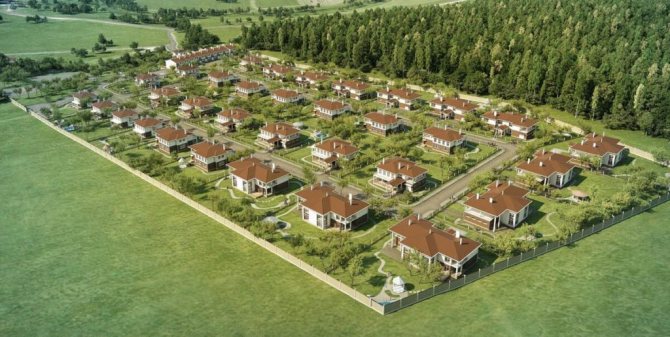
Second type of permitted use (AUR): agricultural land.
On a note! You can also find out the type of permitted use of a land plot on the Rosreestr website.
I would also like to note that among the frequently asked questions on the Internet search network there are questions about what constitutes the construction of a residential building by citizens, what turnkey house projects are , or a contract for the construction of a residential building. The first two questions are covered in detail in our previous articles (construction of houses from various materials, for example brick, logs, SIP panels, etc.), the definition and purpose of the project, design solutions are given, as well as what a project for building a house is. But the contract for the construction of a residential building can be considered in more detail now.

A plot of land for the construction of a residential building with a small house being built on it
What will the “private sector” be like?
It is recommended to develop areas intended for individual housing construction, taking into account the Standard for Integrated Development of Territories developed by DOM.RF. The model of low-rise urban development assumes, in particular, the combination of different types of buildings on one territory: individual, semi-detached houses and apartment buildings up to 4 floors high. Mixed development provides a smooth transition from suburbs to urban areas.
The development of individual and semi-detached houses makes it possible to achieve a high level of housing provision according to the model as a whole (35-50 sq. m per person), the Ministry of Construction notes. At the same time, families have their own entrances to the house from the street and separate plots of land.
What properties does the new order apply to?
The notification procedure concerns the construction of individual housing construction projects and garden houses on garden plots.
Another important nuance: before March 1, 2020, cadastral registration and registration of rights to residential buildings created on land plots provided for gardening and summer cottage farming can be carried out without sending notifications about the planned construction or reconstruction of objects and notifications about the completion of work. You only need to take three steps: contact a cadastral engineer, with his help fill out a declaration about the property and prepare a technical plan, submit these documents to Rosreestr through the MFC. After March 1, 2020, a notification procedure will also begin to apply for this category of objects.
Who will connect the electricity and gas?
Now, the program developers note, private houses are built mostly by the citizens themselves. The provision of sites with engineering and transport infrastructure is carried out by the owners of the sites independently. This increases the risk of violating building codes, and also increases the cost to citizens of providing home infrastructure.
In the future, plots provided for individual housing construction will be provided with engineering, transport and social infrastructure in advance. It is proposed to synchronize the investment programs of electricity, gas and heat suppliers with territorial planning, and to do this at the expense of the regional budget. In some cases, expenses may be partially compensated from the federal budget; 137 billion rubles are expected to be allocated for this.
How should it be built?
The program is supposed to stimulate the construction of standard residential buildings. This, according to the Ministry of Construction, will improve the quality and safety of buildings. It is noted that the appearance of house facades and fences may be regulated by local landscaping rules.
It is planned to create a publicly accessible catalog of standard individual housing construction projects, including those using prefabricated house kits, formed on the basis of open architectural competitions. To popularize standard projects, access to the catalog will be free. A publicly accessible register of recommended manufacturers of house kits who have proven the quality of their products will also be created.
What is the fundamental difference between an individual housing construction project and a garden house?
The equivalence of the concepts “individual housing construction object”, “ residential building”
" and "individual residential building" is a residential, separately located building, having no more than three floors and no higher than 20 meters, consisting of residential and utility rooms, as well as utility rooms. This building cannot be divided into independent real estate units, for example, apartments.
garden house
– a building for seasonal use, intended to satisfy citizens’ household and other needs related to their temporary stay in such a house. That is, a garden house is a non-residential object. This is a new concept introduced on January 1, 2019 by Federal Law No. 217-FZ.
Previously erected residential buildings (information about which was entered into the Unified State Register of Real Estate before January 1, 2020) are recognized by law as residential buildings; previously created non-residential buildings that are not economic and intended for the temporary stay of citizens on garden plots are recognized as garden houses.
Federal Law No. 217-FZ provides for the possibility of recognizing a garden house as a residential building and vice versa - a residential building as a garden house. To do this, you need to contact your local government authority.
Where can I get money?
Currently, banks issue no more than 15 thousand loans per year for the construction of private houses, which is only 1% of mortgage loans. The rate on such loans is 1-3% higher than for the purchase of apartments.
The main reasons for this are the insufficient liquidity of houses and plots of land as collateral compared to housing in high-rise buildings. Often the estimated value of houses is underestimated due to difficulties in identifying analogues and lack of control over the quality of construction, which can result in the presence of hidden defects. Banks' costs for monitoring the intended use of funds are high, and the risks of non-compliance with construction deadlines and technology are high. Rates for home insurance are on average higher than rates for apartment insurance.
To eliminate these obstacles, advisory standards for individual housing construction lending will be developed; their use will minimize risks for banks and form a market for standard mortgage loans for individual housing construction. The standards will include requirements for typical repurposed home designs that may serve as collateral, for the borrower, and for loan origination and servicing procedures.
Standard houses built in territories for the integrated development of individual housing construction that meet the standards will have liquidity comparable to apartments in multi-apartment buildings, according to the Ministry of Construction. This should lead to banks issuing loans to borrowers on terms comparable to loans for the purchase of apartments. For companies engaged in low-rise construction, project financing and the mandatory use of escrow accounts will be introduced. By minimizing credit risk, banks are expected to reduce interest rates on loans for the construction of private houses.
Banks will become more willing to issue loans for the construction of houses according to standard designs.
By the way
What changes did the new legislation bring?
The new law regulated in detail the unified notification procedure for the start and completion of construction of individual housing construction projects and garden houses on garden plots. It is being introduced to replace the previously existing permitting procedure, when, before laying the foundation, it was necessary to obtain a construction permit, and then another document - permission to put the facility into operation. Now the procedure has been simplified: the owner of a land plot is obliged to notify the municipal administration of the planned construction of a residential building.
City dwellers flee the virus to the countryside
An unprecedented interest in renting country houses appeared towards the end of March. According to Avito, the demand for rental suburban housing in the Moscow region is twice as high as last year, in the Leningrad region - 2.3 times. At CIAN, the increase in requests on the website for rentals increased 2.5 times over the three weeks of March compared to last year, and on March 21-22, the number of requests for renting dachas jumped 4-5 times.
The main reason for the excitement was the pandemic. “A country house is a safe area where no one outside can enter. You can take a walk on your property without contacting other people,” says Oleg Mikhailik, director of Knight Frank’s country real estate department. In addition, people are thinking about summer holidays at their dachas, since it is unclear whether it will be possible to go to the sea or whether the borders will be closed. In recent days, realtors have begun to receive requests to rent houses for “self-isolation” of elderly parents. Many are planning to move their entire family out of town: companies have transferred employees to remote work, and children are doing distance learning.
Interest in buying country houses is also growing, but not so rapidly. Sellers and buyers prefer to wait out the uncertain economic situation.

The proposed program should stimulate private construction. Photo: Photoxpress

